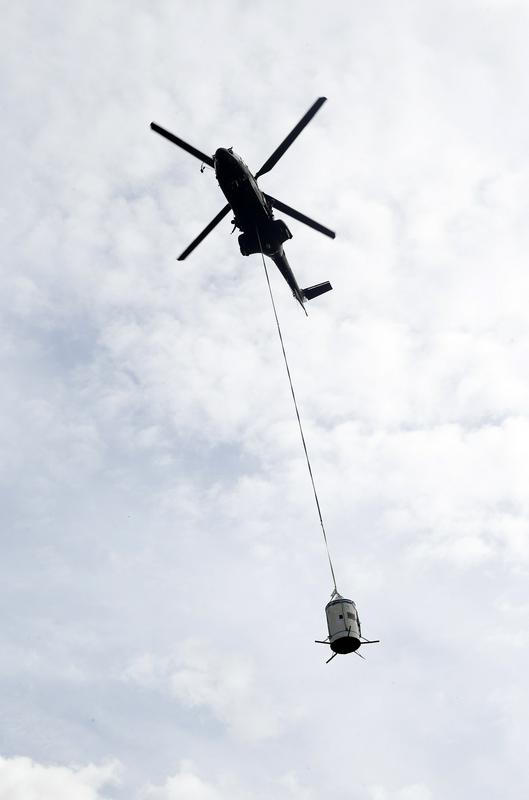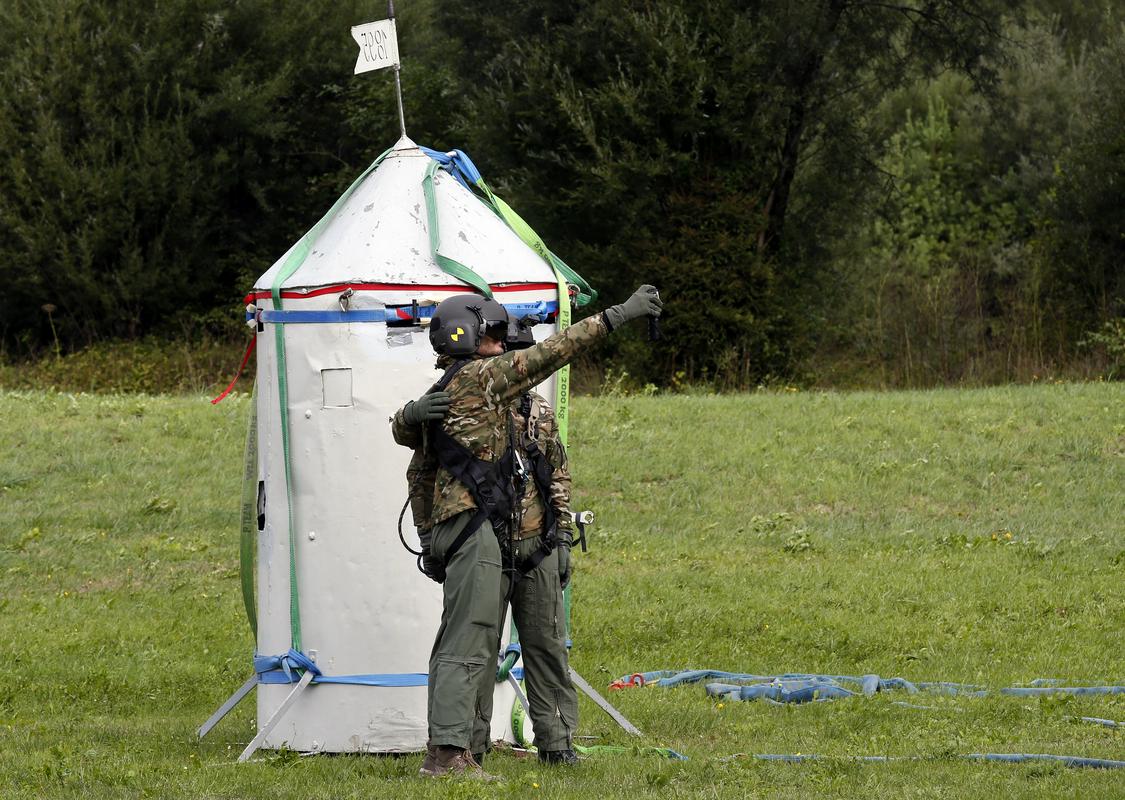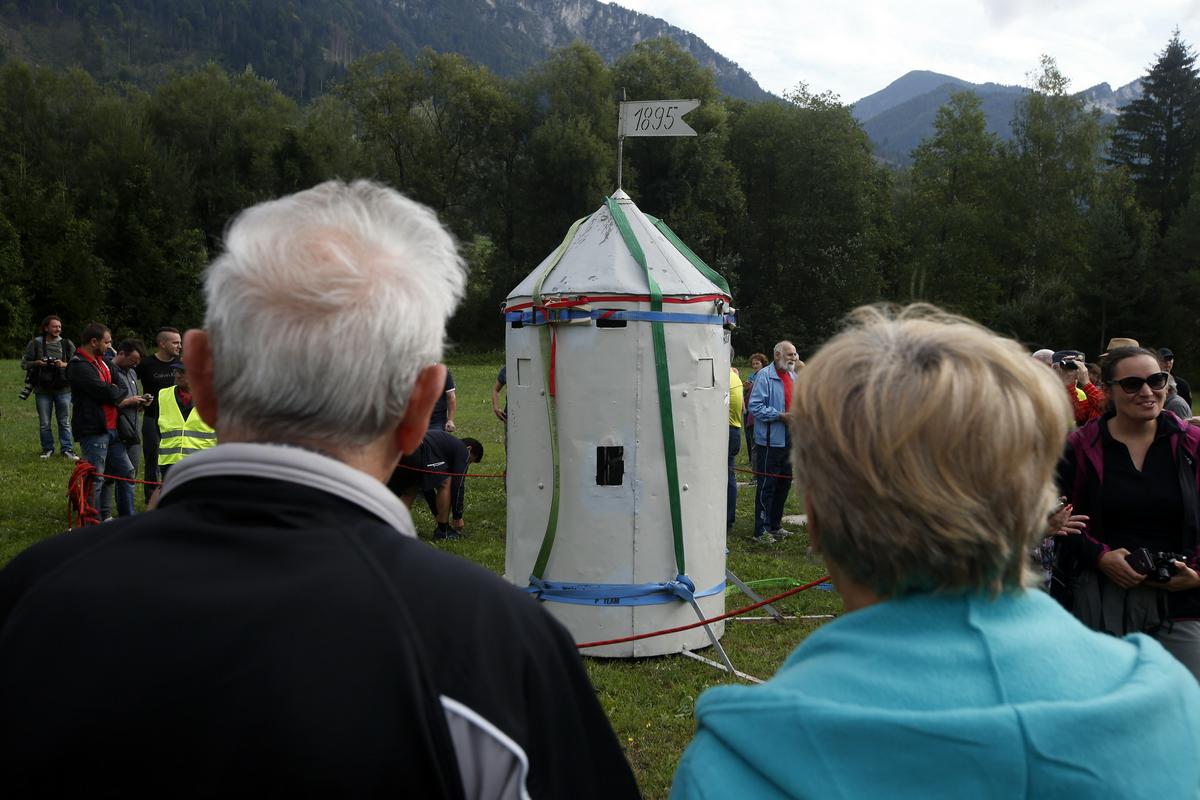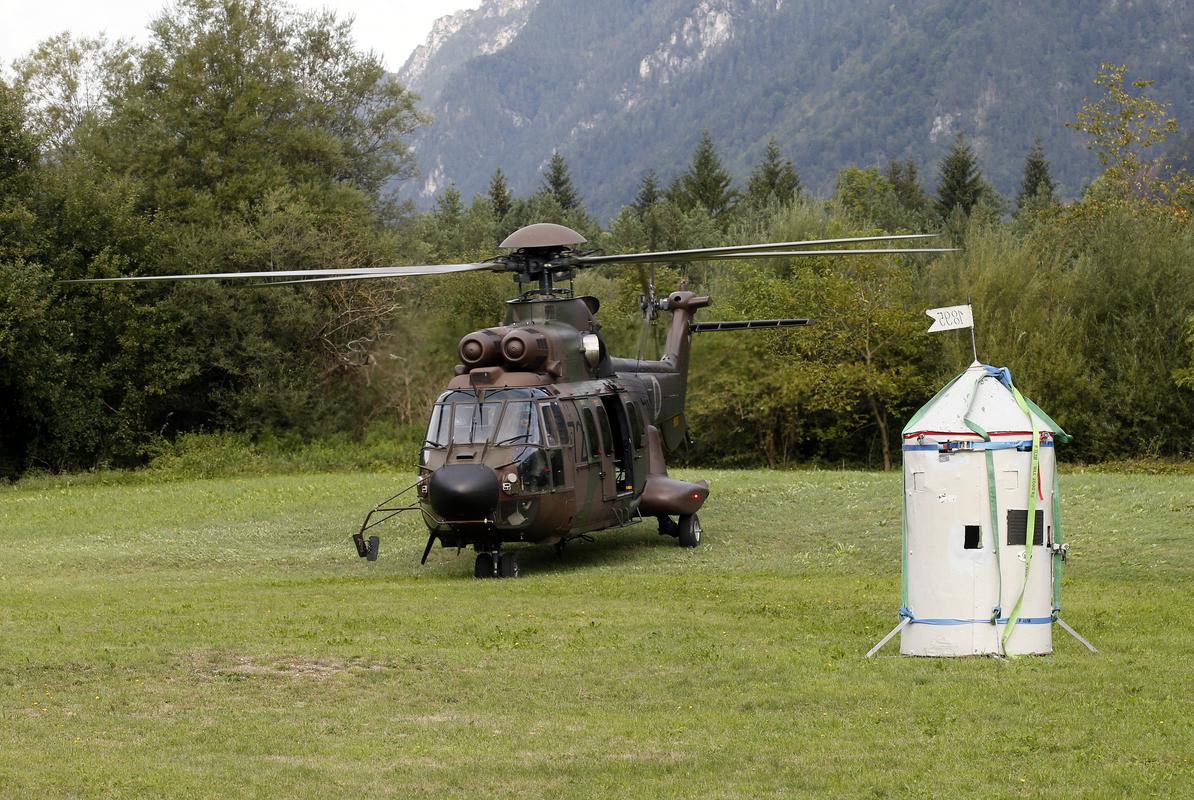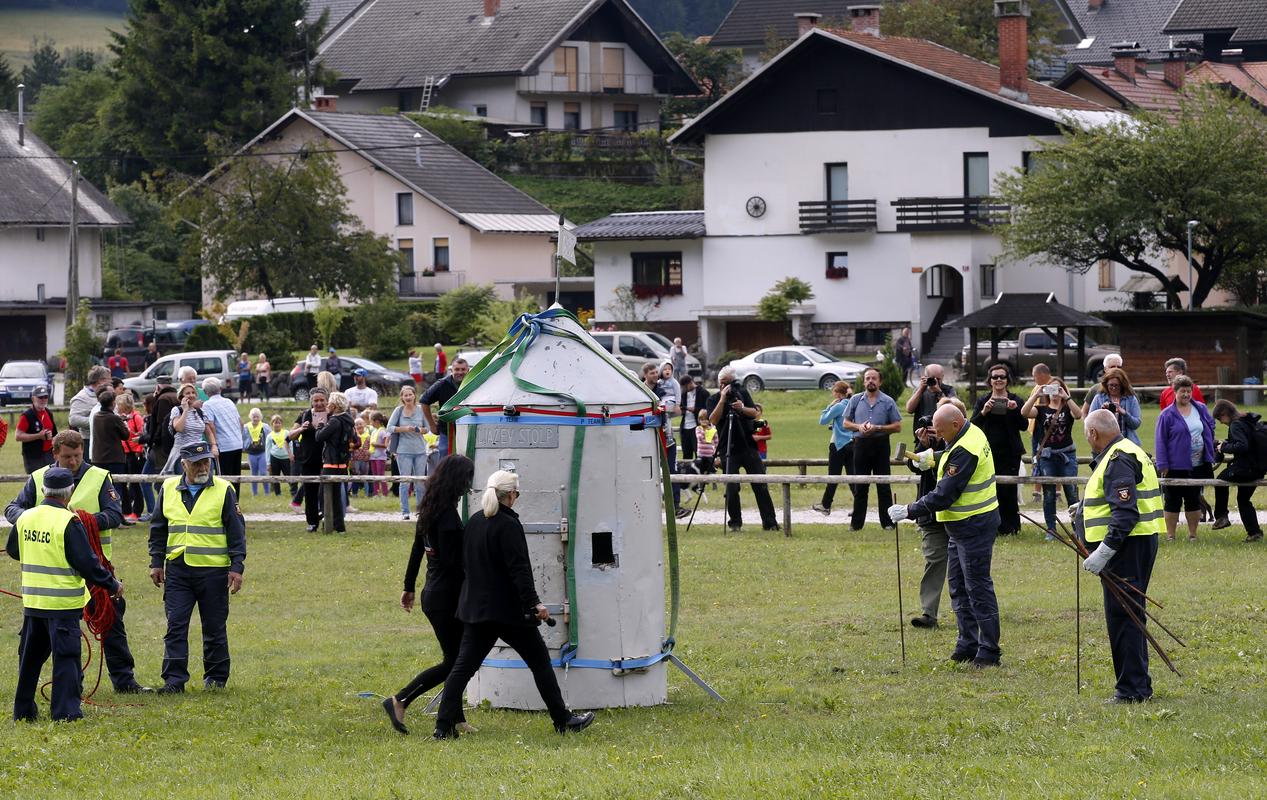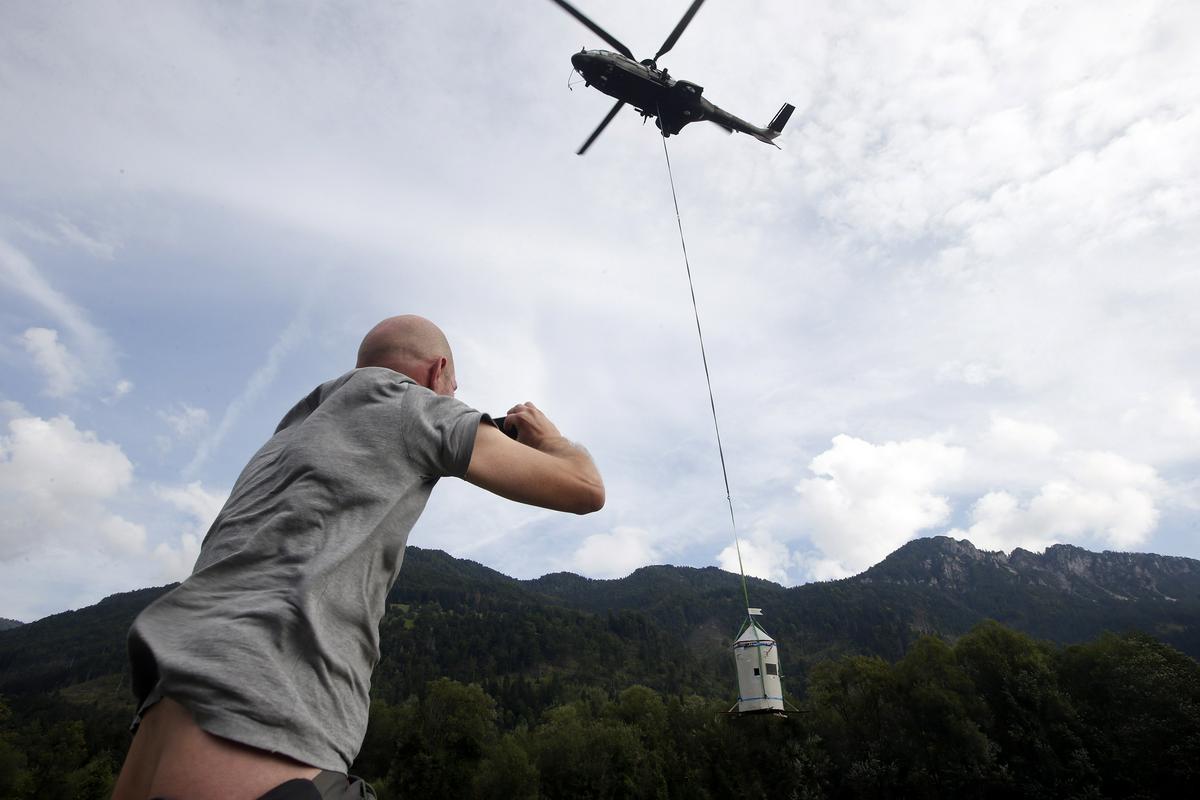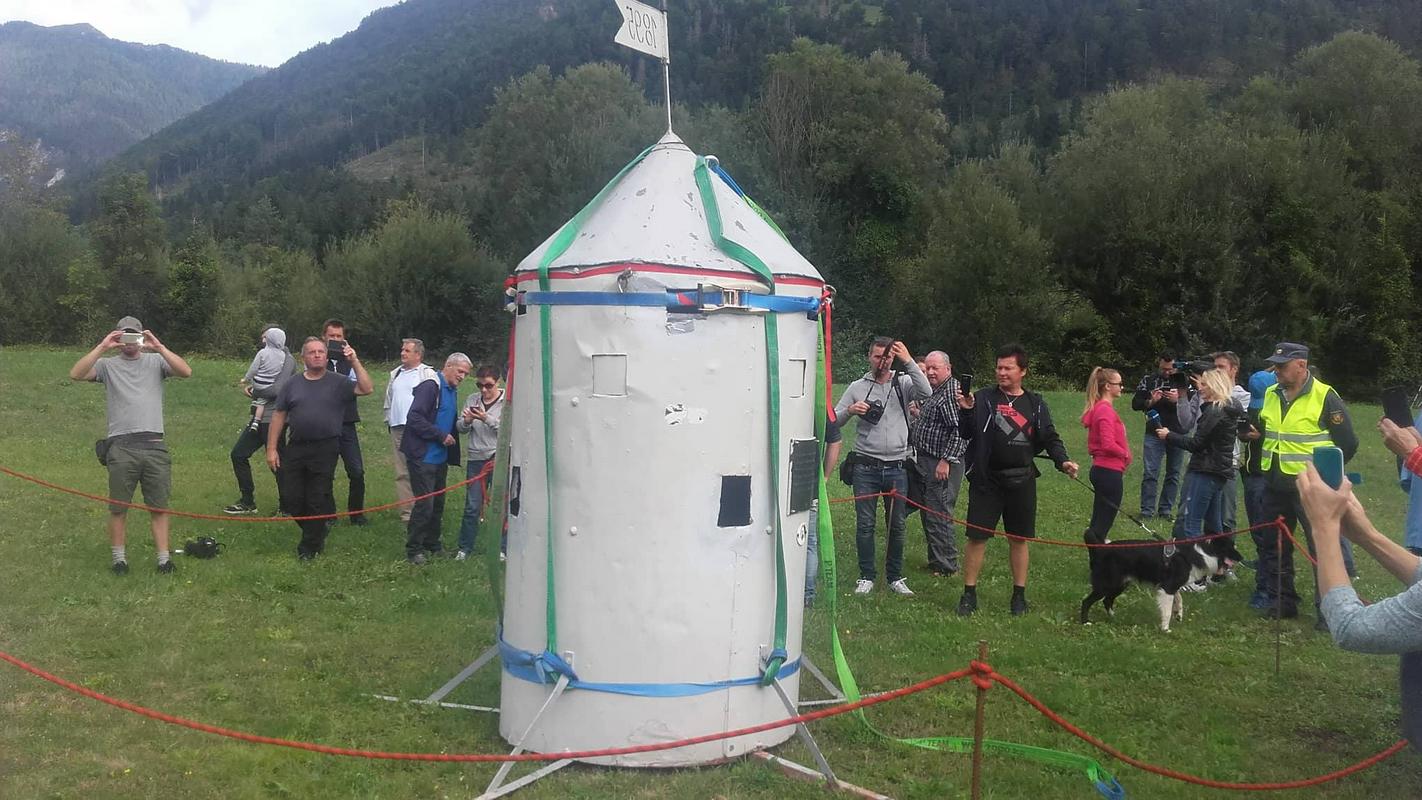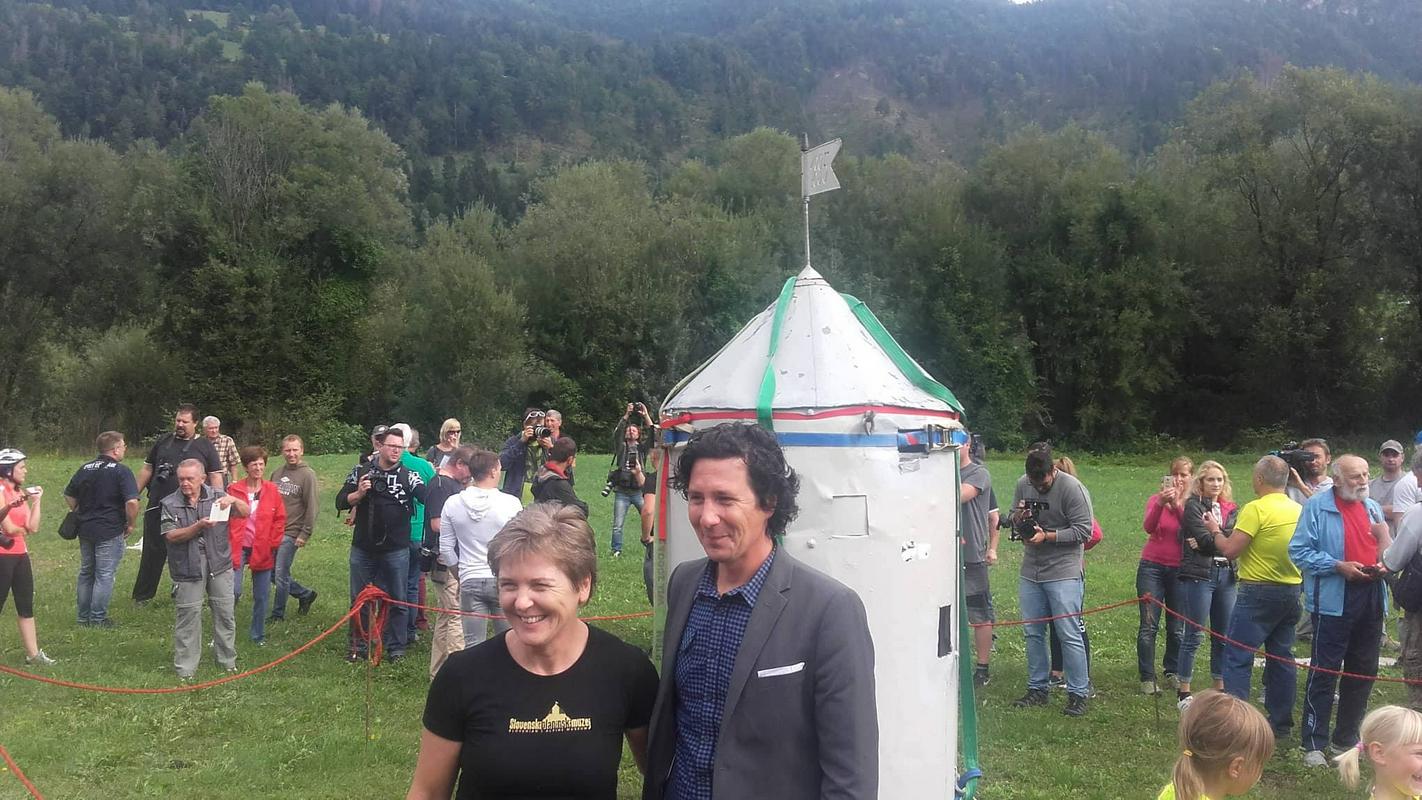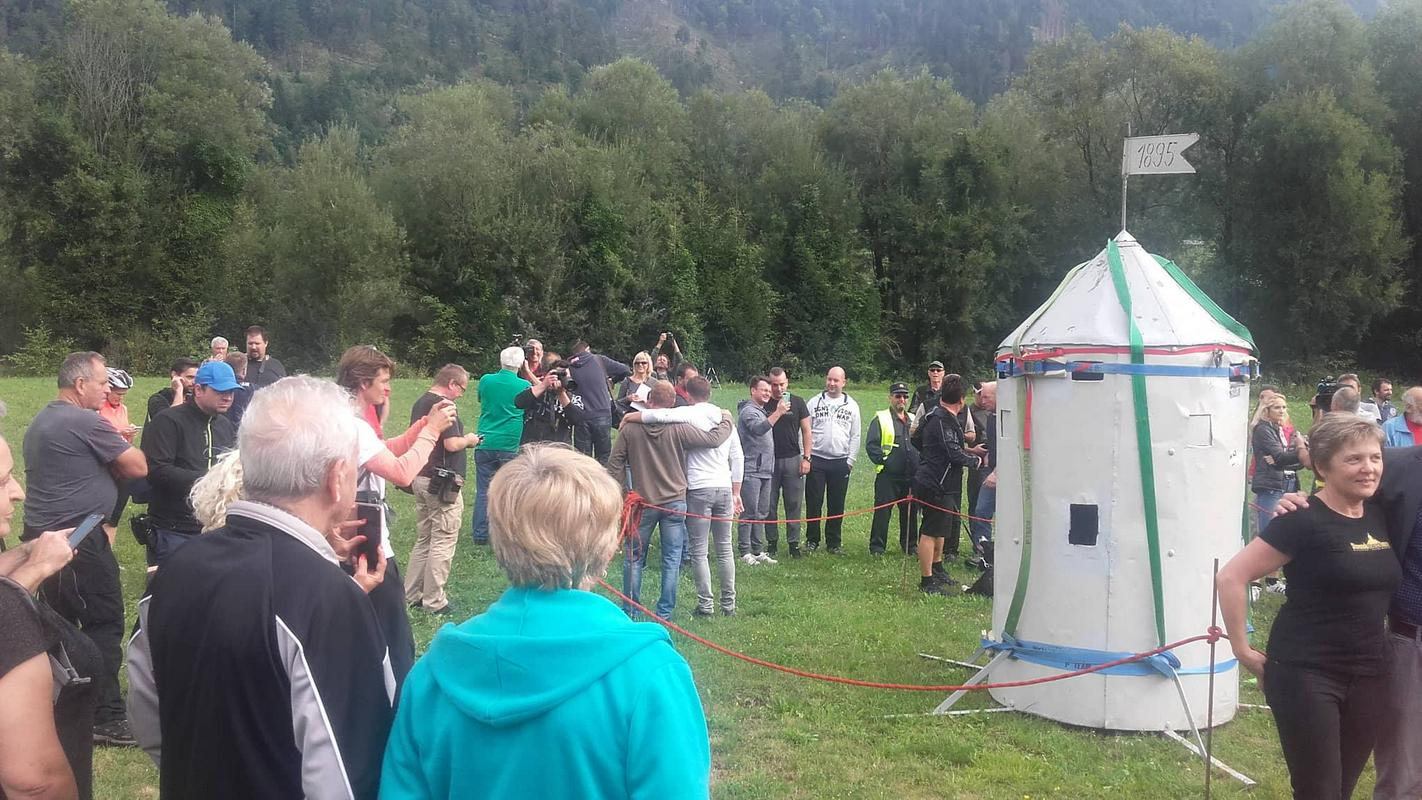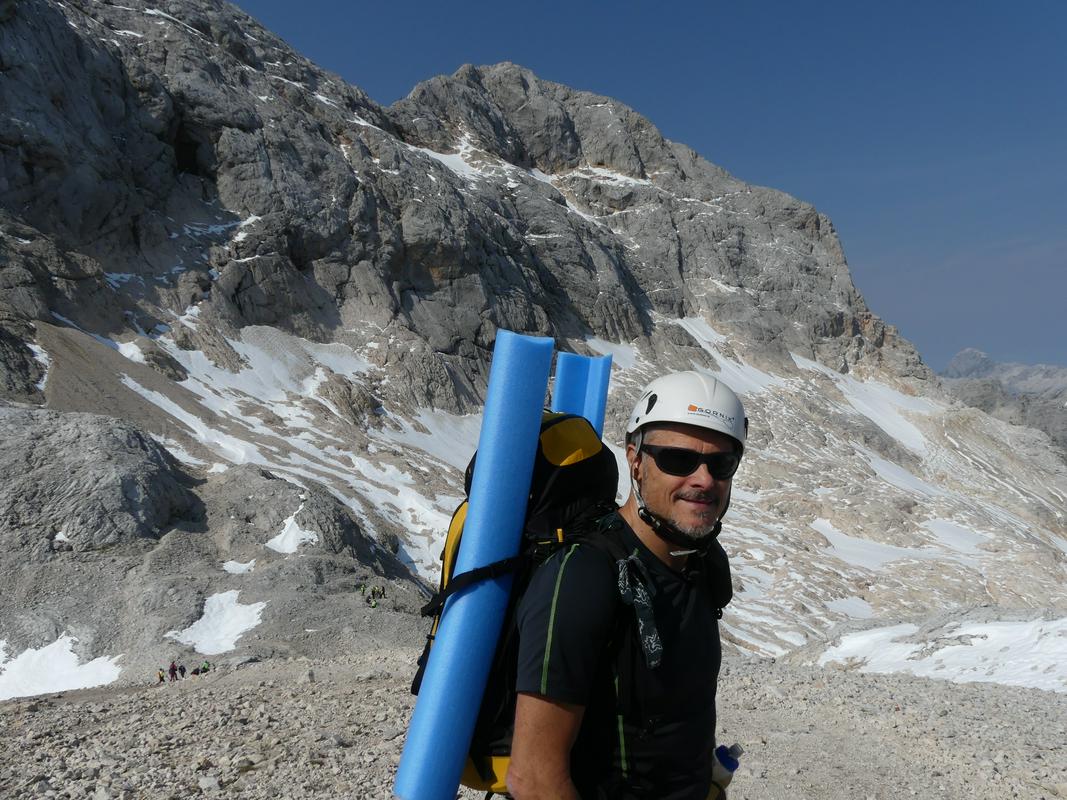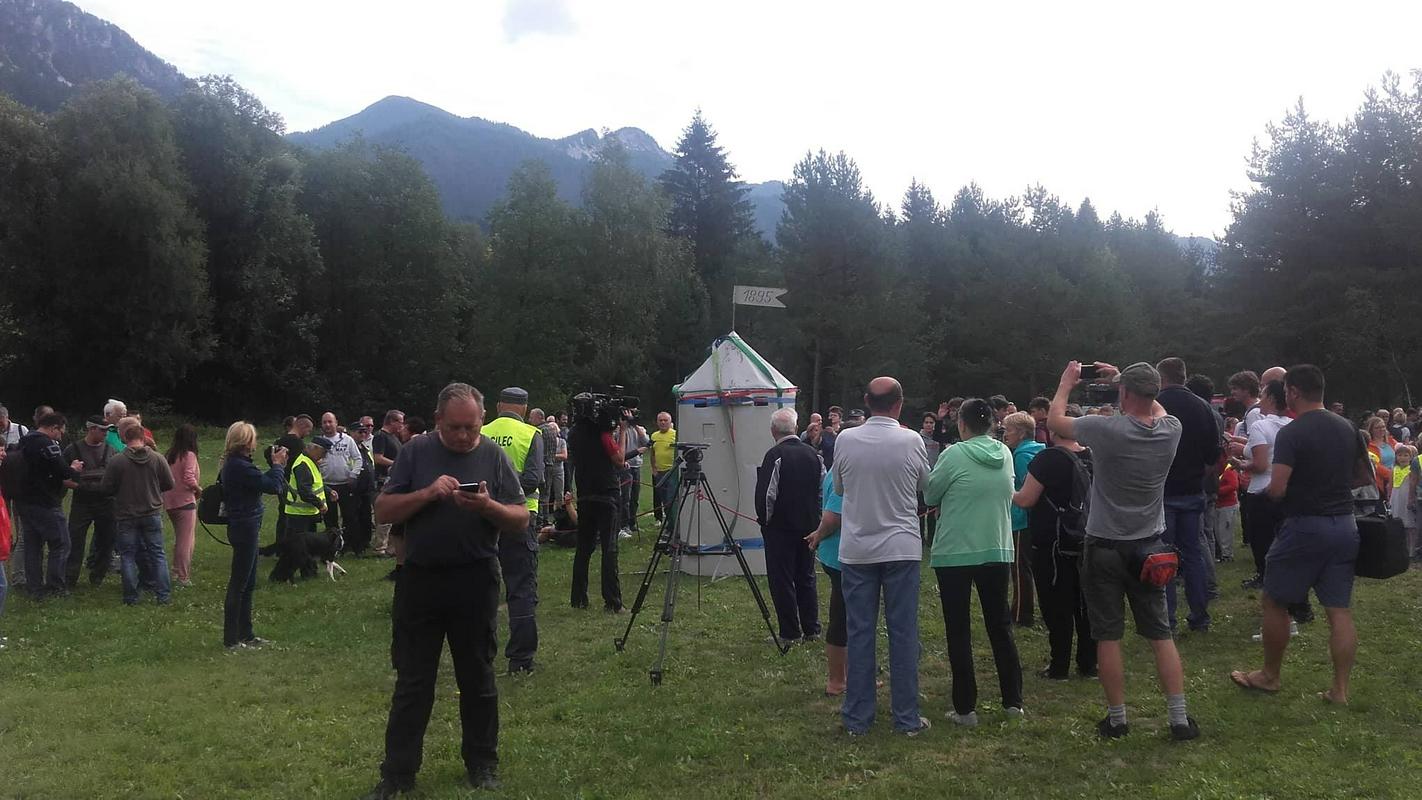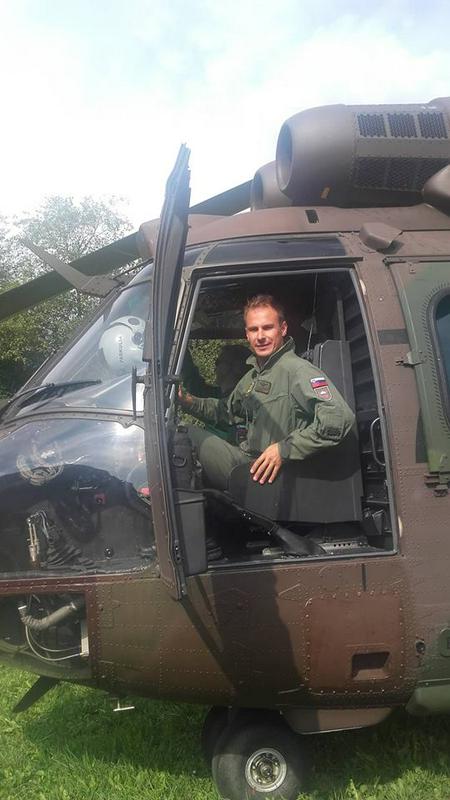
The procedure started at around 5 in the morning when the head of the project, Martin Kavčič from the Slovenian Cultural Heritage Protection Office, Gorazd Lemajič (National Museum) and Igor Peršolja (Restoration Center), climbed from Kredarica to the top of Triglav and made final preparations for transporting the tower. A few minutes after half past nine, a helicopter of the Slovenian Armed Forces set off towards Triglav.
The tower was attached to the helicopter by rope, and after a good ten minutes from its 'take off' from Triglav we saw the desired "cargo" approach the heliodrom in Mojstrana. Smooth landing of the "Slovenian pride" was accompanied by excited applause of hundreds of locals, journalists and other curious spectators, and after a rope was pulled around the tower for protection, the visitors were allowed to get a closer look.
Among the spectators was also the legendary 83-year-old Franjo Potočnik, who has been on Triglav several thousand times already and is the record holder by the number of climbs on it. Last time this past Wednesday. Most often he ascends to the top at night when it's not crowded, always setting off from the valley. And, of course, he will be going up even now, when the top is "naked".
"We're emotional. It's such a sentimental event, being able to see the tower down here after so much time," said one of the locals from Dovje, who came to the helipad with her friend. "We wanted to see it from up close, what it looks like, because we do not know if we will ever climb to Triglav."
"Our heart is singing. It's a great day. I'm very pleased that parents have also brought their children," said the director of the National Museum of Slovenia Barbara Ravnik. "These children have experienced something that other generations did not and might never be able to again. The children will surely have a different impression of the tower and alpinism, as well as restoration efforts."
The renovation will cost around 45,000 euros. According to Ravnik, restoration costs will be higher than a new tower would be, but this is the only right way: "This tower is the original one. I think it would be a sin to replace it with a new, perhaps more solid construction."
The tower will now be taken to the restoration centre, where it will be cleaned and inspected, and then taken to a workshop in Jesenice, where they will perform tower body repair. Visits to the reconstruction site will be organised. "Hopefully, the winter will not be too quick, so that the tower could return in a month ago." However, the return of the tower will be technically more demanding, as special care will be required to prevent deformation during the return.
Symbol of Slovenia
The tower was erected in August 1895 by the priest Jakob Aljaž, who noticed the great interest of foreigners over Slovenian mountains. In April of that year, he bought a "spike"– 16 square metres of land on top from the municipality of Dovje in Mojstrana. Aljaž imagined and financed a small cylindrical tower of thick galvanized sheet metal, which was supposed to replace the collapsing wooden triangulation pyramid at the top. The tower became a symbolic shelter for all Slovenians. Aljaž donated the top and the tower to the Slovenian Mountain Society with the desire to preserve the Slovenian face of Slovenian mountains.
The tower was put up on the top of Triglav on 7 August 1895 by artisan Anton Belec and his assistants. Belec first presented the tower not far from his workshop in Šentvid, and then the tower was taken apart again and transported to the Gorenjska region by train. Tower parts were carried to the top of Triglav, weighing close to 20 kilograms each. Since welding had yet to be invented at the time, the parts were nailed together and secured with screws. The workers had to brave bad weather, it rained several times. It took five hours to put up the 1.90 meter high tower. The tower was also equipped with a telegraph to establish between Kredarica and Dovje.
The tower's image has changed over the years. Among other things, it was painted with the colours of the Slovenian and Italian tricolour, while during socialism after the Second World War, it had a red overcoat and a star on top. Today it is plain grey. The tower was declared a cultural monument of national importance in 1999, and soon after it became state property.
Ksenja Tratnik, MMC; translated by K. Z.




















































